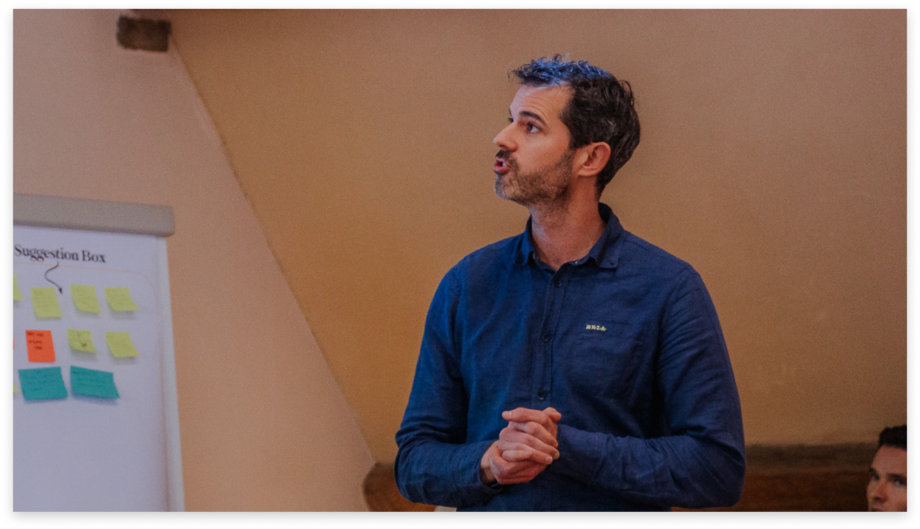In today’s fast-paced business landscape, agility is, besides an often-overused empty buzzword, a necessity.
“The organizations we created in the 20th century were designed much more for reliability and efficiency than for agility and speed.”
Dr. John Kotter
A shift in organizational design and strategy is needed in today’s fast-paced, digital world. While organizations in the past were built for stability and efficiency, the rapid pace of change today requires companies to be agile and quick to adapt. This is a key principle of everything Business Agility stands for. It’s about being able to respond quickly to changes in the market, innovate rapidly, and adapt to evolving customer needs. This shift in mindset is crucial for companies to thrive in the digital age.
However, simply adopting Agile methodologies isn’t enough. Organizations must understand the true impact of agility and how it addresses specific challenges. By observing and engaging with clients, we can pinpoint areas for improvement and implement strategies to increase flexibility, engagement, and responsiveness. Let’s explore these 3 areas and how you can respond to common challenges! 💪
The Three Pillars of Business Agility
1️⃣ Shock Absorption
A high level of skill fluidity indicates an ease of adaptability to unexpected circumstances or changes in demand. Lightweight structures, such as cross-functional, end-to-end teams or knowledge centers and communities, reinforce this fluidity. These structures provide a foundation for engagement and drive meaningful business results. Organizations with a high shock absorption maturity find it easier to organize toward change, demonstrate higher employee commitment, and continuously improve toward their goals.
However, many organizations struggle with:
- Adapting delivery capabilities to shifting demands.
- People prefer to focus on their strengths, regardless of priorities.
- Productivity is low, and there is no sense of urgency to improve.
- Pressing business as usual (BAU) leaves no time nor mental space for learning or growth.
- Overwhelming demand leads to firefight management and poor decision-making and fosters short-term thinking.
- Increased stress and dependency on specialists, feeding bottlenecks.
To address these issues, we emphasize skill fluidity and flexible structures, such as cross-functional teams and knowledge structures (e.g., communities of practice, enabling teams, competence centers, temporary workgroups, …). Approaches include:
- Designing and rolling out learning paths for team coaches, product managers, and leaders.
- Setting up competence centers and communities of practice to foster enthusiasm and skill development.
- Facilitating team effectiveness to engage people in delivering meaningful results.
- Initiating process improvement at the portfolio, program, and team levels.
- Facilitating OKR (Objectives and Key Results) cycles to align teams, enhance goal-setting capabilities, and achieve meaningful results.
- Creating transparency to monitor progress and nudge follow-up.
- Develop team collaboration and flow capabilities.
Organizations with a high capacity for shock absorption can adapt to change more effectively, reflected in increased employee engagement and continuous progress toward their objectives. These organizations excel in preserving and leveraging their knowledge and expertise. The efficiency of their onboarding and offboarding processes serves as a testament to this capability.
Check out our other blog on Shock Absorption in Business Agility.
2️⃣ Engagement
Psychological safety must be actively cultivated. If it is lacking, promoting it takes a lot of time and a significant cultural shift. In a psychologically safe environment, individuals find it easier to take initiative, show ownership and vulnerability, and take responsibility for collective results. However, a chicken-and-egg problem arises regarding what those shared ambitions should be. Without psychological safety, the creative tension needed to pursue these goals—marked by a sense of ownership and engagement—will not arise. Conversely, building psychological safety without alignment on these shared ambitions is difficult.
Engagement issues often manifest as:
- Employees adhere strictly to instructions without assuming additional ownership.
- Management reacts to problems rather than proactively address them, increasing dependency and diminishing ownership.
- A culture of complaining and finger-pointing.
- Decreasing creativity and stagnating personal growth (people don’t discuss personal growth).
- Teams neglect time for skill mastery.
“Excellent colleagues, a clear purpose, and well-understood deliverables: that’s the powerful combination.”
Patty McCord, Powerful: Building a Culture of Freedom and Responsibility
Psychological safety is crucial for fostering initiative and responsibility. To cultivate this environment, you can:
- Facilitate OKR cycles to develop clear and aligned goals and a strategy execution communication protocol.
- Coach and train leaders to improve their effectiveness.
- Set joint ambitions and goals, monitoring their progress and execution.
- Communicate and facilitate participative sessions to align individuals with organizational ambitions.
- Combine training, learning paths, and continuous communication to build a cohesive culture.
- Ensure transparency about progress from various levels.
- Develop experimentation capabilities and enable learning transparency from both successes and failures.
“Leadership Effectiveness is a primary contributor to business performance.”
Anderson, Robert J.; Adams, William A A, Mastering Leadership: An Integrated Framework for Breakthrough Performance and Extraordinary Business Results
3️⃣ Responsiveness
Integrating a validated learning mindset and focusing decisions on desired outcomes requires embracing a problem-focused rather than a solution-focused approach. Delivering solutions without validating whether they address the targeted problems is inherently risky. Developing this learning mindset enhances an organization’s connection with its customers and makes it easier for the organization to reinvent itself. Who was it again that said the only constant is change? 😉
Organizations often face misalignment between delivery and customer expectations, leading to:
- Delivery misaligned with customer needs.
- Lack of customer interest and proactive feedback.
- Success is measured by output rather than business results.
- A significant disconnect between Business and IT.
- Team members act as “mercenaries” instead of “missionaries” (Marty Cagan, Inspired: how to create products that customers love, 2021).
Promoting and developing a validated learning mindset and problem-exploration approach is recommended to improve responsiveness.
Common approaches include:
- Establishing regular feedback moments with stakeholders, customers, and users using diverse and creative formats (a survey once in a while won’t cut it)
- Designing, implementing, and developing a disciplined product cadence approach to align and engage teams and stakeholders
- Implementing learning cadences at a program level, not just at the team level.
- Connecting team deliverables to strategic objectives.
- Translating strategy into a roadmap and epics, which are then converted into concrete team deliverables. Reconnect completed deliverables with strategic initiatives to ensure everyone maintains the big picture.
- Ensuring quality communication between stakeholders and teams.
- Developing a continuous improvement mindset.
By embracing these strategies, organizations can better connect with their customers and identify future innovation opportunities, reinforcing that the only constant is change.
Read our other blog on Creating Responsiveness.
Conclusion
The need for agility in business has never been greater. The Business Agility Heartbeat model provides a structured approach to enhance agility by addressing key challenges in shock absorption, engagement, and responsiveness. By implementing targeted strategies, organizations can improve their adaptability, foster a culture of ownership and creativity, and align their efforts with customer needs and strategic goals.

For those who recognize these challenges in their organizations, it may be time to invest in developing the following agility capabilities to drive sustainable growth and success.
- Build Effective Teams: Learn how to assemble people, establish a foundation of trust, and align towards a common goal, ensuring team members hold each other accountable.
- Deliver Value Predictably: Master the techniques to enhance flow within your organization at team, portfolio, and program levels for consistent value delivery.
- Focus on the Customer: Learn how to align your operations with business outcomes and customer desires, employing a hypothesis-driven approach to product development.
- OKR Cycles: From Willpower to Commitment: Gain expertise in setting compelling goals that align with a shared purpose, cultivating a commitment to reach for the stars.
Want to invest in your own business agility? We’re happy to help!

